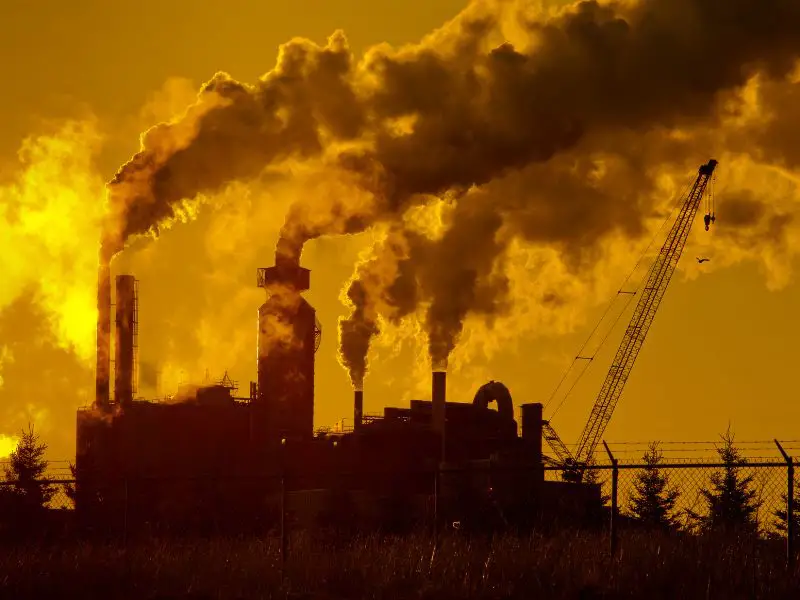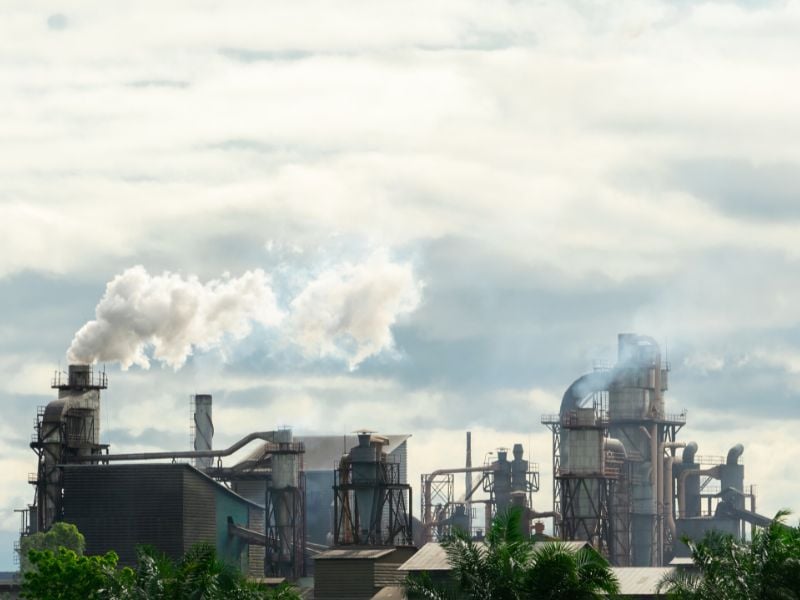Greenhouse gases maintain the temperature on Earth suitable for human habitation and the survival of millions of other species. These gases, however, are now out of whack and threaten to radically alter not just which living creatures may survive on this planet, but also where they can do it.
In today’s article, we’ll look into the five major greenhouse gases and their sources.
What Are Greenhouse Gas Emissions
In scientific terms, a greenhouse gas is a gas that absorbs infrared radiation emitted by the Earth’s surface and reemits it in all directions. This increases the temperature of the Earth’s atmosphere enough to sustain life. Without this greenhouse effect, life on Earth would be impossible. Without the sun’s warming rays bouncing off the Earth’s surface, the planet would be frozen solid.

Five Major Greenhouse Gases
Here are the major greenhouse gases that contribute to the warming of our planet as a result of the greenhouse effect:
1. Carbon Dioxide
According to the EPA, carbon dioxide is the largest greenhouse gas emitted by human activities. 78% of the carbon dioxide comes from fossil fuels like coal, oil, and natural gas. Carbon dioxide, known as CO2, has a relatively long half-life. After it has been released into the atmosphere, 40% of it will still be there after one hundred years, 20% after one thousand years, and 10% even after 10,000 years.
2. Methane
Methane is a colorless gas that is 25 times more potent than CO2 in trapping heat in the atmosphere, accounting for around 16% of total greenhouse gases. The gas comes from natural sources such as swamps and wetlands, but a huge portion of it comes from modern sources such as landfills, livestock, gas pipelines, sewage, and certain industrial processes.
3. N20
Based on the Intergovernmental Panel on Climate Change (IPCC), the lifetime of nitrous oxide in the atmosphere is greater than a century. Although it contributes only 6% to green gashouse emissions, nitrous oxide is 264 times more strong than carbon dioxide in 20 years and can cause acid rain when mixed with Sulfur Dioxide (SO2).
The largest contributors to nitrous oxide emissions are farming and livestock, including the production of fertilizer and manure, the burning of agricultural leftovers, and the combustion of fossil fuels.
Industrial gases are also major contributors to nitrous oxide emissions. Contributing to around 2% of all emissions, these gases include industrial solvents, refrigerants, fertilizers, cleaners, and electronic and industrial processes. Nitrous oxide is also a component of automobile exhaust fumes.
What Are The Effects of Greenhouse Gasses?
Greenhouse gas emissions have far-reaching environmental and health consequences. Smog and air pollution contribute to respiratory problems. Greenhouse gases induce extreme weather, food supply shortages, and increasing wildfires. Moreover, the regular weather patterns that we anticipate are becoming more unpredictable. Some species are going extinct, while others are migrating or increasing in number to unsustainable levels, displacing and eradicating other species not suited for warmer temperatures.

These alterations pose hazards not just to plants and animals but also to humans. Insects with dengue fever and Zika may thrive in warmer temperatures, and heat waves are becoming increasingly fatal for people.
People may go hungry if droughts and floods deplete our food supply; according to a 2011 National Research Council research, agricultural yields would decrease by 5 to 15% for every degree of global warming.
Food insecurity can result in mass migration and political unrest. in January 2019, the Department of Defense published a study describing the hazards to U.S. military sites and activities throughout the globe posed by flooding, droughts, and other climate change-related effects.
Reducing Greenhouse Gas Emissions
Almost every industry of the global economy, including manufacturing, agriculture, transportation, and power generation, plays a role in the greenhouse gases emitted into our atmosphere; therefore, all of these sectors must transition away from fossil fuels if we are to avert the most severe consequences of climate change.
With the Paris Climate Agreement of 2015, nations throughout the world are looking to stop it, but more political will is still needed. Twenty nations are accountable for at least three-quarters of the world’s greenhouse gas emissions, with China, the United States, and India at the forefront.

Final Thoughts
Earth has been evolving ever since the formation of our solar system some four and a half billion years ago. There have always been fluctuations in the climate that occurred before humanity evolved.
However, with the onset of the industrial revolution, CO2 levels began rising exponentially, causing fast changes in the Earth’s environment. This manmade change is unprecedented in its rapidity and severity, and it poses great risks not only to the planet’s inhabitants but to all life forms on Earth as well.
The alarming rate of change calls for urgent action now to avoid catastrophe in the future. Climate change is the defining issue of our generation because climate change threatens every person on the planet. Our security, economy, prosperity, and even our survival are all at peril.
Related: 8 Major Cities With the Worst Pollution, Effects of Carbon Footprint and How to Reduce Yours


Youre so cool! I dont suppose Ive learn anything like this before. So good to seek out someone with some authentic thoughts on this subject. realy thanks for beginning this up. this web site is one thing that’s wanted on the net, somebody with a little originality. useful job for bringing something new to the internet!